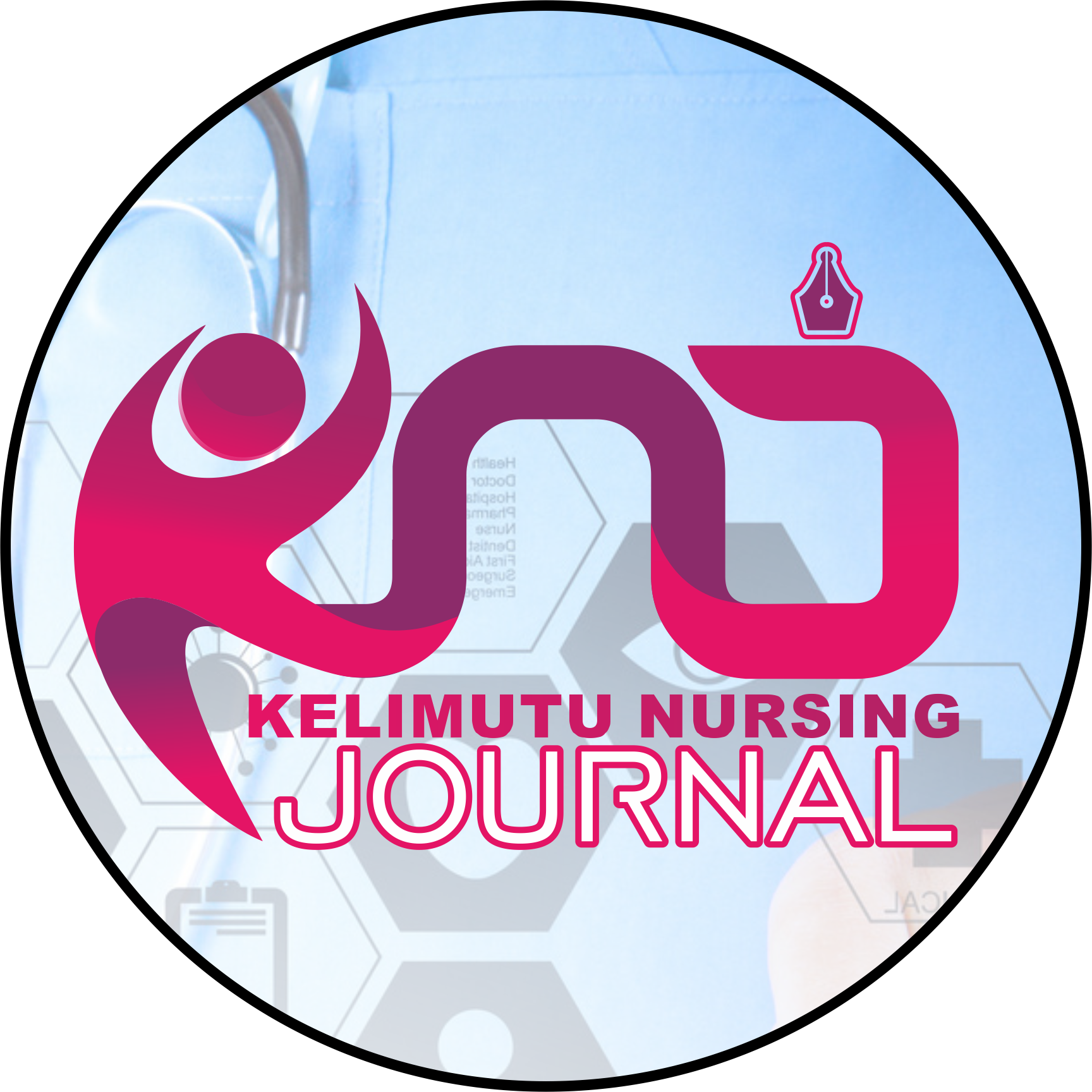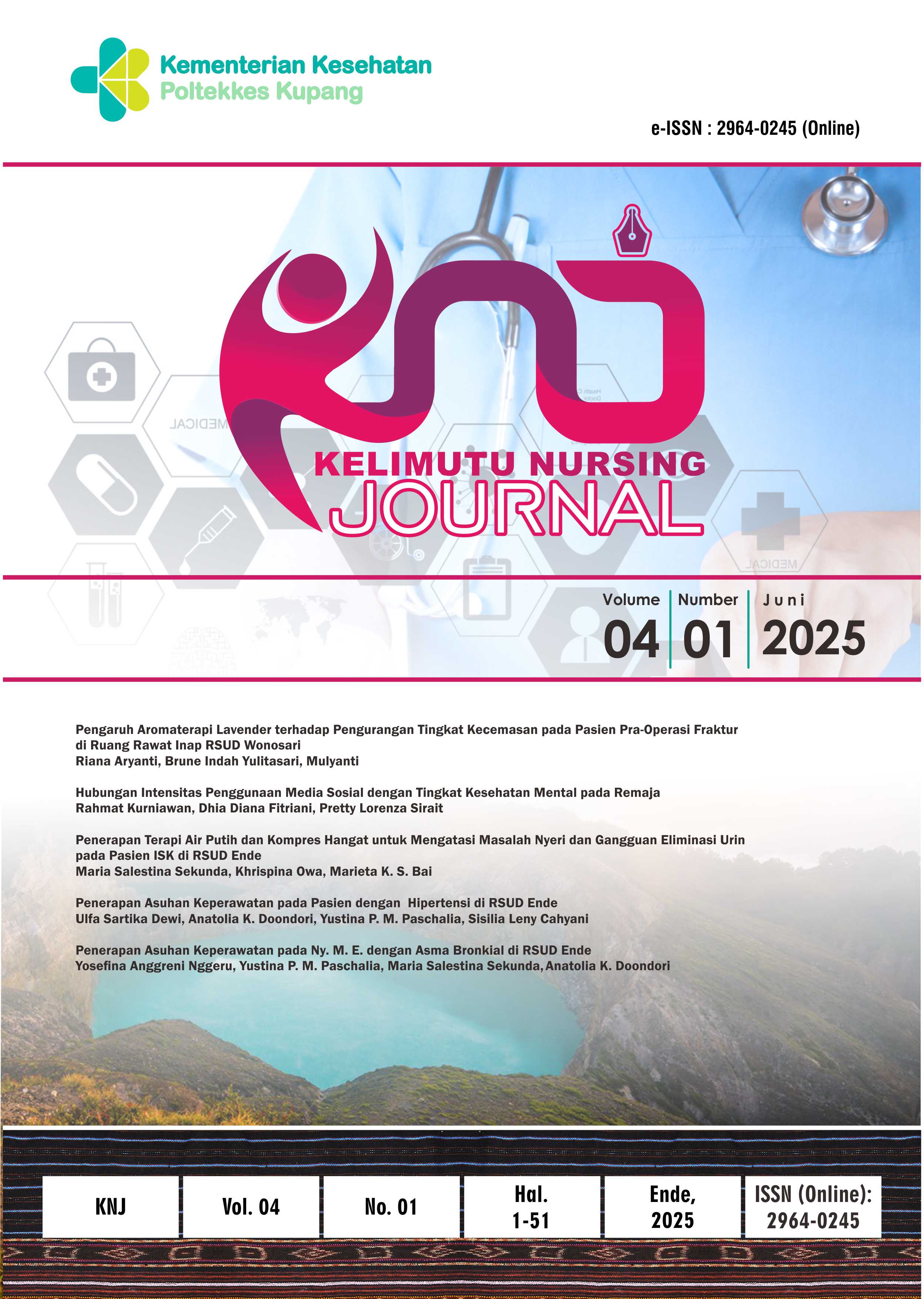Abstrak
Dalam pelaksanaan asuhan keperawatan pada kasus asma, perawat mendapat tantangan atau permasalahan kurangnya pemahaman perawat akan penggunaan literature dalam penetapan standar pelayanan seperti harus menggunakan buku Standar Diagnosa Keperawatan Indonesia (SDKI), Standar Luaran Keperawatan Indonesia (SLKI), Standar Intervensi Keperawatan Indonesia (SIKI) serta ketidakpatuhan pasien dalam mencegah timbulnya serangan asma. Studi kasus ini bertujuan untuk menggambarkan asuhan keperawatan pada Ny. M. E. dengan diagnosa medis asma bronkial dan menganalisis kesenjangan antara teori dan kasus nyata. Adapun metode yang digunakan adalah studi kasus dengan pendekatan asuhan keperawatan yang meliputi pengkajian, diagnosa, perencanaan, implementasi dan evaluasi keperawatan. Hasil studi kasus ditemukan tiga masalah keperawatan pada kasus yaitu bersihan jalan napas tidak efektif berhubungan dengan hipersekresi jalan napas, pola napas tidak efektif berhubungan dengan hambatan upaya napas, dan gangguan pola tidur berhubungan dengan sesak napas. Intervensi dan implementasi keperawatan dirancang dan dilaksanakan dengan tindakan dependen seperti observasi, edukasi dan interdependen seperti tindakan kolaborasi. Setelah dilaksanakan implementasi selama 3 hari masalah bersihan jalan napas tidak efektif teratasi sebagian dan masalah pola napas tidak efektif dan gangguan pola tidur teratasi. Setelah dilaksanakan implementasi selama 3 hari masalah keperawatan pola napas tidak efektif dan gangguan pola tidur teratasi sedangkan masalah bersihan jalan napas tidak efektif teratasi sebagian dan disarankan untuk pasien dan keluarga agar mengikuti semua anjuran dari petugas kesehatan dengan tujuan mencegah timbulnya komplikasi yang lebih parah.
Referensi
Global Initiative For For Asthma (GINA). (2018). Global Strategi for asthma manajemen and prevention.
Kartikasari Dian, dkk. “Gambaran Respirasi Rate (RR) Pasien Asma”. Jurnal Penelitian IPTEKS 05,No.2 (2020) : 277.
PPNI. 2016. Standar Diagnostik keperawatan Indonesia. Definisi dan Indikator Diagnostik, Edisi 1. Jakarta: DPP PPNI.
PPNI. 2018. Standar Intervensi Keperawatan Indonesia: Definisi dan Tindakan keperawatan, Edisi 1. Jakarta: DPP PPNI.
PPNI. 2018. Standar Luaran Keperawatan Indonesia. Persatuan Perawat Nasional Indonesia.
Prihanto Eko, et al . (2022). Patologi untuk fisioterapi. Sumatera Barat: PT. Global Eksekutif Teknologi. Tersedia dari Digital Library Polkesku.
Profil Dinas Kesehatan Kabupaten Ende. (2023). Diambil Tanggal 07 Januari 2024. Profil Rumah Sakit Umum Ende. (2023). Diambil tanggal 16 November 2023.
Sutrisna Marlin. “Hubungan Self Efficacy Dengan Kontrol Asma Bronkial”. Jurnal Kesehatan Masyarakat 06, No.3 (2022) :1999
Suprayitna, M., Asrianti, M., & Arifin, Z. (2022). Penerapan batuk efektif pada ketidakefektifan bersihan jalan nafas penderita asma bronkhial. 24–31.
WHO. Asthma. 2022. Diambil pada 16 September 2024

Artikel ini berlisensiCreative Commons Attribution-ShareAlike 4.0 International License.
Hak Cipta (c) 2025 Kelimutu Nursing Journal

